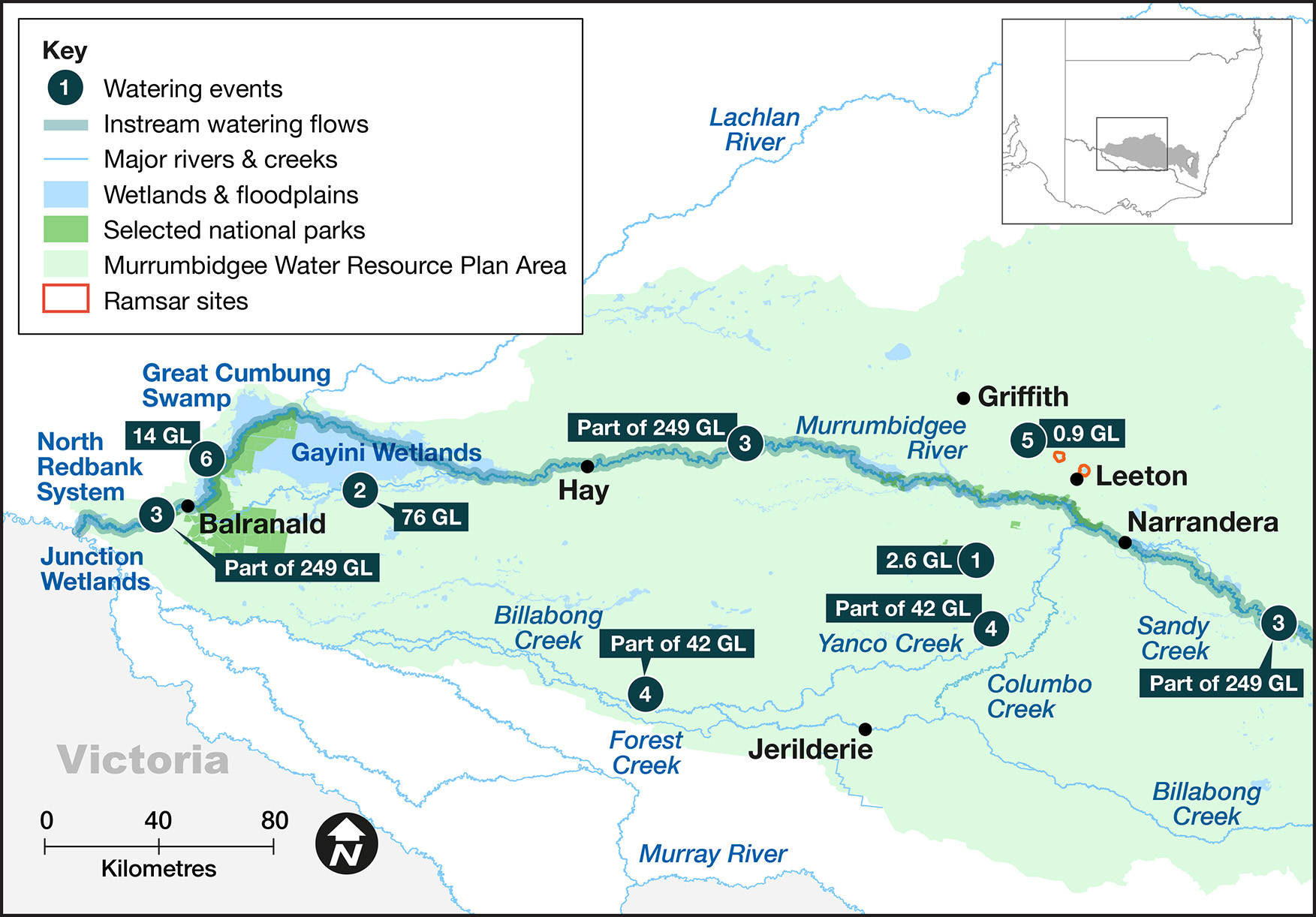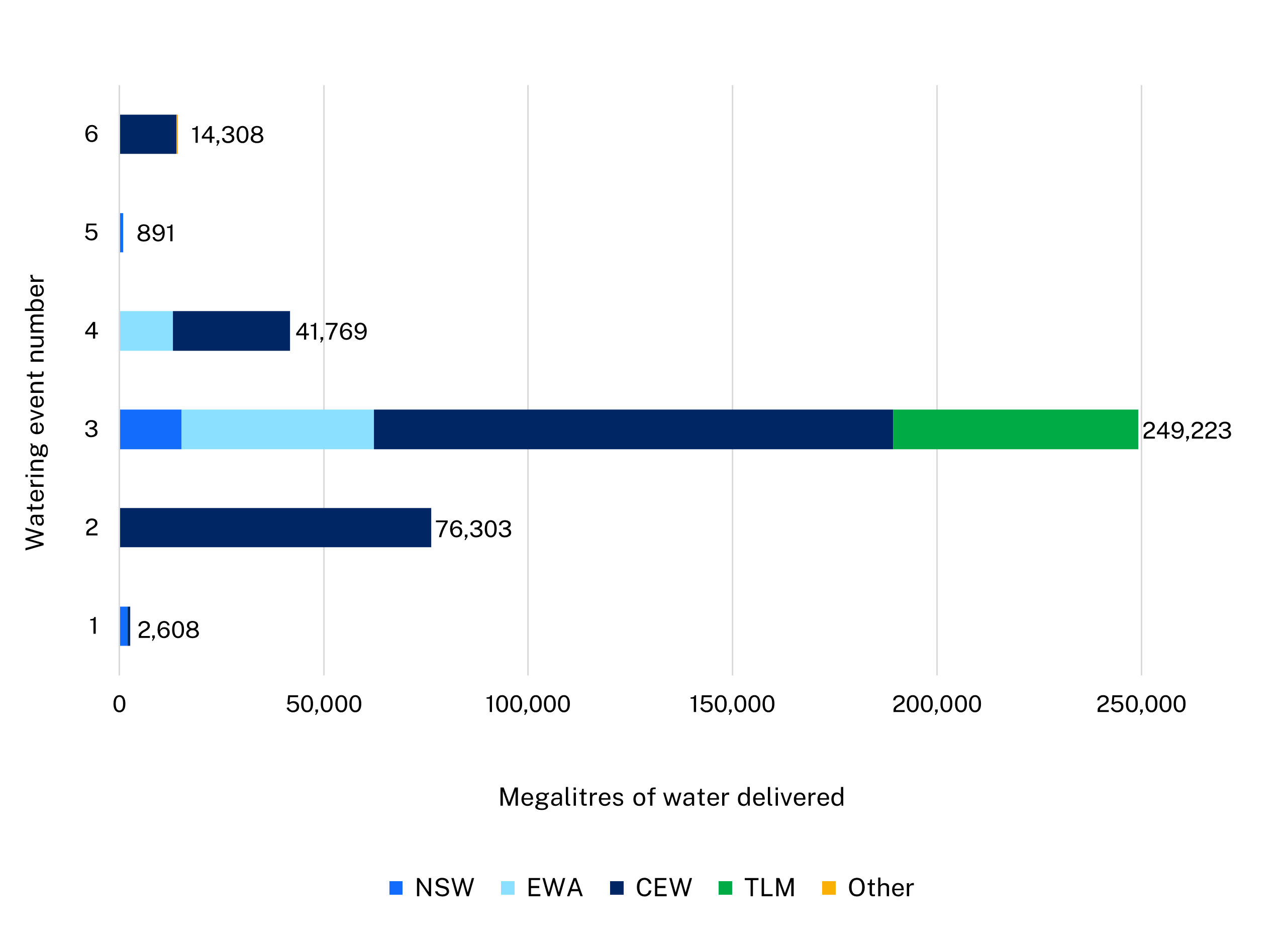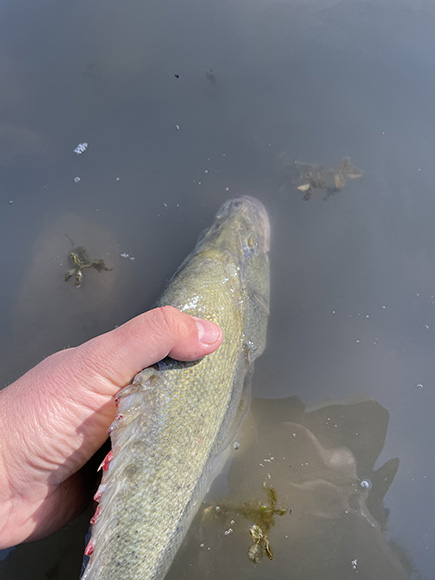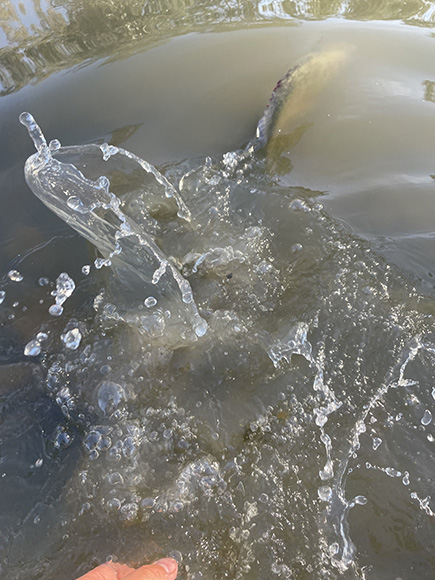Waterbird breeding, native fish movement and endangered frogs were the focus of managed environmental flows in 2022–23.
Key outcomes
Under very wet conditions, environmental water managers worked with partner agencies and stakeholders to coordinate the delivery of water for the environment to:
- support a pelican rookery of about 28,000 nests in the Gayini (Nimmie-Caira) wetlands
- maintain a highly significant ibis and spoonbill rookery of about 100,000 nests in the Gayini (Nimmie-Caira) wetlands
- increase the distribution of the endangered southern bell frog and Australasian bittern in the Lowbidgee floodplain and Coleambally Irrigation Area
- protect native fish populations from the risk of hypoxic blackwater conditions in summer and avoid fish deaths in the lower Murrumbidgee and mid-Yanco billabong systems
- improve fish movement opportunities by managing more gradual and natural flow recession behind large operational releases, as well as minimise riverbank erosion.

Catchment conditions
During the 2022–23 year, the Murrumbidgee catchment experienced La Niña weather conditions resulting in above average rainfall and below average temperatures.
The high rainfall resulted in major flooding throughout the catchment and general and high security licences being 100% allocated. Supplementary water was also accessed during unregulated flow events and the release of water from dams to create airspace.
These circumstances created ideal conditions for native fish movement between floodplain, river, and creek environments. The numerous overbank inundation events in the Lowbidgee floodplain combined seamlessly with ongoing environmental water diversions to create ideal conditions for colonial waterbird breeding.
About the catchment
The Murrumbidgee catchment is in southern NSW and covers an area of 81,527 square kilometres.
Climatic conditions range from alpine in the Snowy Mountains to semi-arid on the Riverina plains.
Major rivers are the Murrumbidgee, with connection flowing into the Murray River and occasionally the Lachlan catchment (Great Cumbung area) when both systems are experiencing high flows.
The Murrumbidgee catchment has 26 storage or diversion structures and 1,690 kilometres of river and surrounding wetlands.
Water for Country
The Murrumbidgee catchment is Country to the Barapa Barapa, Mutthi Mutthi, Nari Nari, Ngarigo, Ngunnawal, Nyeri Nyeri, Wadi Wadi, Wolgalu, Wamba Wamba, Weki Weki and Wiradjuri Aboriginal peoples.
Water for Country is environmental water use planned by the Department of Planning and Environment and Aboriginal people to achieve shared benefits for the environment and cultural places, values and/or interests.
In the 2022–23 water year in the Murrumbidgee, environmental water managers:
- worked collaboratively with Nari Nari Tribal Council to deliver cultural and environmental outcomes throughout the Gayini wetlands through post-flooding deliveries of water for the environment
- started to build relationships with Wiradjuri and Mutthi Mutthi Nations through on Country meetings
- observed that wetlands and floodplains were revitalised by the floods, with box trees brought back to life and an abundance of old man weed and nardoo
- avoided fish kills in the Lower Murrumbidgee River following environmental flow recession management, which was a significant cultural and ecological outcome.






